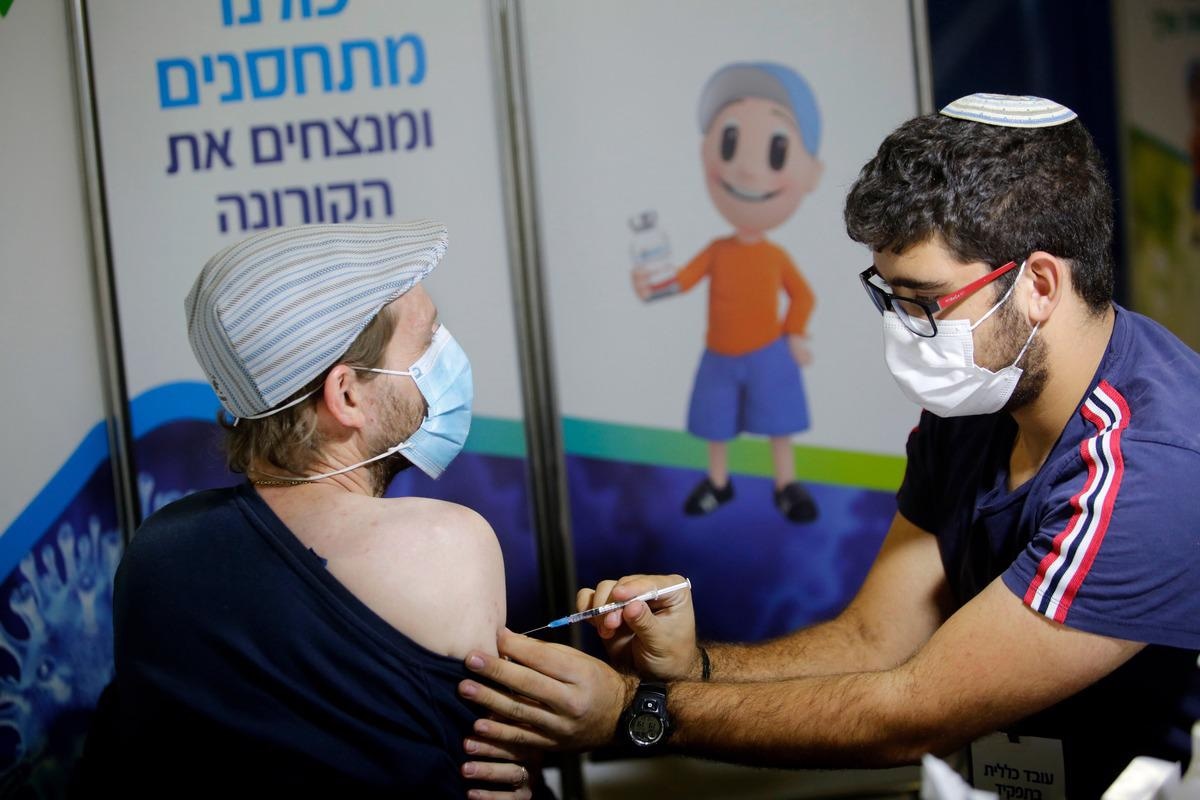A recent study posted to the Research Square* preprint server and under consideration at BMC Infectious Diseases assessed the impact of coronavirus disease 2019 (COVID-19) vaccines on unvaccinated populations and analyzed the various vaccination policies in Israel.

Background
Various surveys have reported a stark decrease in new severe acute respiratory syndrome coronavirus 2 (SARS-CoV-2) infections in Israel after 48% of its population was immunized against COVID-19. Understanding the parameters and variables that affected this decline in positive cases is important to formulate more effective COVID-19 policies.
About the study
The present observational study used daily demographics of SARS-CoV-2 cases and the economic data from 250 Israeli cities to investigate the impact of vaccination on unvaccinated populations. The researchers also studied the shift from the transition phase to the community-immunity phase observed in this country.
The team collected demographic data, including individual identification numbers, age, geographic area, date of polymerase chain reaction (PCR) test for COVID-19-diagnosis and test result, time of hospitalization, the worst hospital event, and COVID-19 outcome. Also, they obtained vaccination-related data like the number of vaccinations administered per day for different age groups and geographical areas. Additionally, data like the median age of a city population and the number of people belonging to each age group were collected.
The study defined two groups of populations, including the total population in a city and the populations susceptible to COVID-19 infections like the unvaccinated individuals and recovered COVID-19 patients. Furthermore, two important factors were also defined, namely the hospitalization impact factor and the positive impact factor.
An extended framework of the susceptible-exposed-infectious-removed (SEIR+) model was used to simulate COVID-19 transmission in Israel and the impact of vaccination policies on this spread. In this model, each person is represented by one out of the following range of states: susceptible (S), exposed (E), infected but pre-symptomatic (Ipre), infected and asymptomatic (Iasym), infected and symptomatic (Isym), recovered (R), hospitalized (H), fatal (F), quarantined and susceptible (Qs), quarantined and exposed (QE), quarantined and pre-symptomatic (Qpre), quarantined and asymptomatic (Qasym), quarantined and symptomatic (Qsym), and quarantined and recovered (QR). The transitions between each state were assessed from the known probabilities of COVID-19 in Israel.
The study also simulated vaccination policies having different vaccination rates. For each vaccination rate, four vaccination policies were simulated prioritizing the vaccination of:
1) younger populations,
2) older individuals,
3) people aged over 60 years, and
4) individuals aged between 16 and 35 years and then the rest of the populations; the last policy equally distributed vaccinations among all age groups.
Results
The study results showed that from March 2020 and January 2021, a significant number of COVID-19-positive cases were observed in three SARS-CoV-2 infection waves. Also, an increase in cases was found in each subsequent wave. It was noted that when the vaccinations were first administered to the at-risk populations, there was a significant increase in the number of cases in the unvaccinated individuals, indicating the beginning of the transition phase. However, when 48% of the total population was vaccinated or COVID-19-recovered, a remarkable reduction in the number of cases was found across all the ages, suggesting the onset of the community-immunity phase.
The positive impact factor of the young population in comparison to the entire population (impactp−tot) and the susceptible population (impactp−sus) was evaluated. The impactp−tot of 0.6 observed before the onset of vaccinations indicated that the positive ratio of the younger population was 60% as compared to the entire population. The impactp−tot reached 1.3 after the vaccinations started, which suggested that a higher number of unvaccinated individuals were infected.
The study noted that cities with populations of a lesser median age exhibited a reduction in new SARS-CoV-2 infections even when a lower percentage of total individuals were vaccinated as compared to the other cities. Furthermore, the entire country of Israel, having a median age of 30.5 years, had a similar decrease in new positive cases when 50% of the country’s population was vaccinated.
The simulation of four vaccination policies showed that the prioritization of vaccine administration and vaccination rate of a region play a significant role in the number of COVID-19 cases and related hospitalizations. The present model showed that simultaneously vaccinating individuals of all age groups is the most efficient vaccination policy against COVID-19.
Conclusion
The study findings showed that the age structure of a country plays a vital role in its COVID-19 vaccination policies. The study also highlighted the need to implement measures towards establishing community immunity across all populations. The researchers believed that this study can serve as a foundation for other countries for the development of effective COVID-19 policies.
*Important notice
Research Square publishes preliminary scientific reports that are not peer-reviewed and, therefore, should not be regarded as conclusive, guide clinical practice/health-related behavior, or treated as established information.
Ross, C. et al. (2022) "BNT162b2 mRNA Vaccinations in Israel: Understanding The Impact and Improving The Vaccination Policies by Redefining The Immunized Population". Research Square. doi: 10.21203/rs.3.rs-1092286/v1. https://www.researchsquare.com/article/rs-1092286/v1
Posted in: Medical Science News | Medical Research News | Disease/Infection News
Tags: Coronavirus, Coronavirus Disease COVID-19, covid-19, Hospital, immunity, Infectious Diseases, Polymerase, Polymerase Chain Reaction, Research, Respiratory, SARS, SARS-CoV-2, Severe Acute Respiratory, Severe Acute Respiratory Syndrome, Syndrome, Vaccine

Written by
Bhavana Kunkalikar
Bhavana Kunkalikar is a medical writer based in Goa, India. Her academic background is in Pharmaceutical sciences and she holds a Bachelor's degree in Pharmacy. Her educational background allowed her to foster an interest in anatomical and physiological sciences. Her college project work based on ‘The manifestations and causes of sickle cell anemia’ formed the stepping stone to a life-long fascination with human pathophysiology.
Source: Read Full Article
